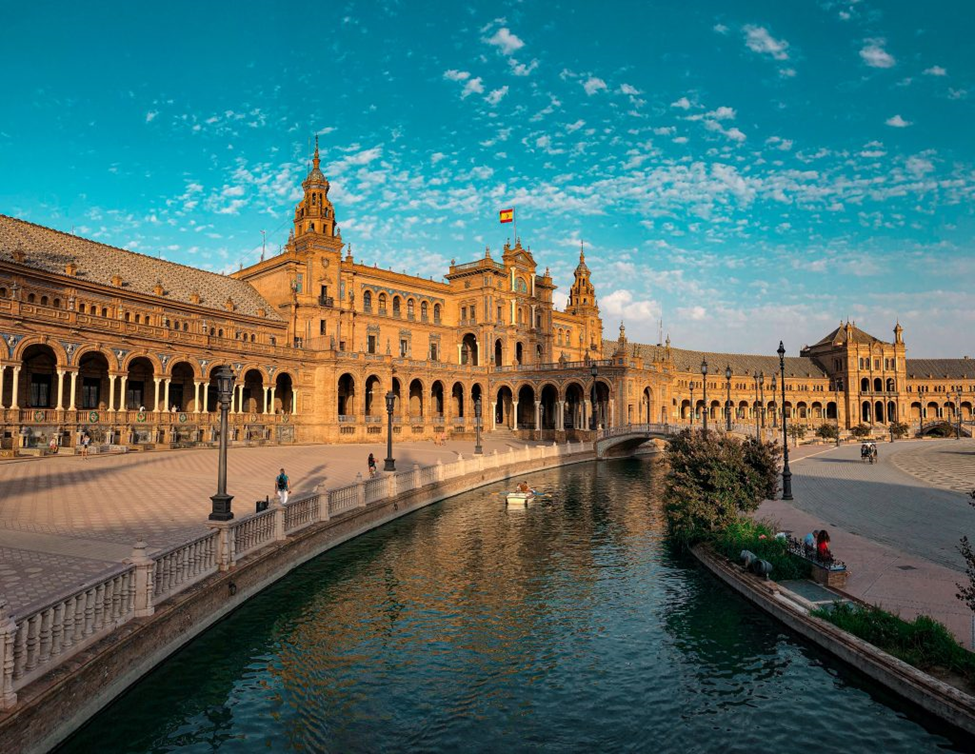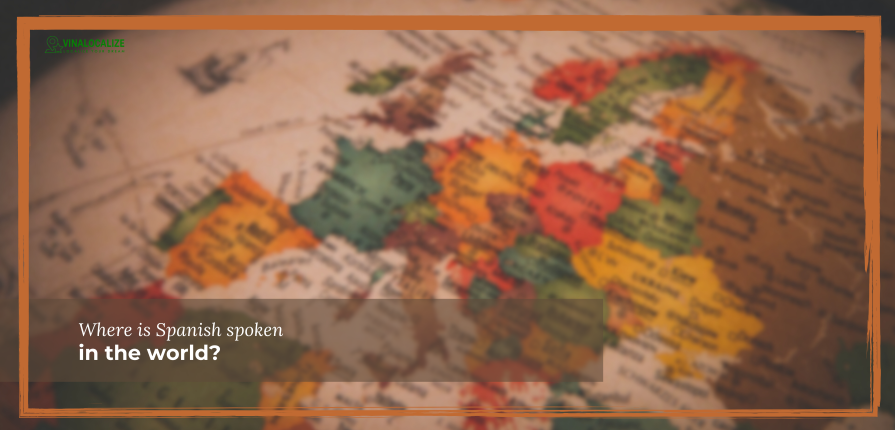Spanish is the fourth most spoken language worldwide as of 2023. Where is the language spoken in the world? Let’s find out in today’s article.
Spanish, a language that has evolved over centuries, possesses a rich historical and cultural tapestry. Its global reach extends far beyond its birthplace in Spain, thus weaving together diverse regions and communities.
In this exploration, we delve into the geographical locations where Spanish flourishes. We will be tracing its journey from Europe to the Americas and beyond.
Where is Spanish spoken in the world?
Spain: The Birthplace of Spanish

Spain stands as the cradle of the Spanish language, where it originated and evolved into the linguistic marvel we recognize today. The Iberian Peninsula, with its varied landscapes as well as deep cultural roots, served as the fertile ground from which Spanish emerged. The language continues to thrive in Spain, reflecting its historical significance as well as cultural prominence. In Madrid’s streets, Spanish echoes rich heritage. Along Andalusia’s sun-soaked shores, the language stands resilient, a living testament.
The United States: Spanish in a Growing Demographic
The United States, a nation of immigrants, hosts a rapidly growing Hispanic population that significantly contributes to the Spanish-speaking demographic. Spanish is the second most spoken language in the country. Major cities like Miami, Los Angeles, and New York boast vibrant Spanish-speaking communities. This growth underscores the influence of historical ties with Spain as well as the proximity to Latin America. In East Los Angeles, Spanish thrives – a cultural bridge connecting diverse communities. In Little Havana, Miami’s lively streets, the language unites, fostering a rich tapestry of connection.
Equatorial Guinea: Spanish in an African Corner
An unexpected corner where Spanish resonates is Equatorial Guinea, a small African nation with a unique linguistic legacy. As a former Spanish colony, the presence of Spanish in this African nation highlights the enduring impact of colonial history on language distribution. Though not widely spoken, its existence is a testament to the historical interconnections between continents. In the markets of Malabo or the coastal towns of Equatorial Guinea, Spanish whispers the stories of a shared past. The language is a cultural thread that spans continents.
Latin America: A Continent of Spanish Speakers
The heartland of Spanish-speaking regions is undoubtedly Latin America, a vast and diverse continent where the language has taken root and flourished. From the deserts of Mexico to the towering peaks of the Andean mountains, Spanish is the official language in the majority of Latin American countries, uniting people across borders.
The linguistic diversity within Latin America adds unique flavors to the Spanish language, with regional accents, colloquialisms, and indigenous influences shaping its local variants. Whether expressed through the rhythmic beats of salsa in Cuba or the colorful folklore of Mexico, Spanish in Latin America is a dynamic and evolving force.

The Philippines: Spanish Influence in Asia
The Philippines, an archipelago in Southeast Asia, bears witness to the historical influence of Spanish colonization. While Spanish is no longer widely spoken in the Philippines, its impact is evident in Filipino vocabulary, surnames, and cultural traditions. The legacy of Spanish colonization has left an indelible mark on the linguistic and cultural identity of the Philippines. In the streets of Manila or the churches of Cebu, echoes of Spanish influence persist, thus reminding Filipinos of a complex and intertwined history.
International Organizations: Spanish as a Global Language
Beyond geographical boundaries, Spanish has established itself as a global language in international organizations. It is one of the official languages of the United Nations, the European Union, as well as various other global institutions. This recognition emphasizes the importance of Spanish as a means of communication and diplomacy on the world stage. Spanish serves as a conduit for international dialogue in the diplomatic chambers of the United Nations. It is also spoken along the corridors of the European Union.
Conclusion
The geographical spread of the Spanish language is a testament to its enduring significance. It also speaks volumes about the ability to connect diverse communities across continents of the Spanish language.
Originating in Spain, Spanish weaves a vibrant tapestry in Latin America. Furthermore, the growing Hispanic population in the U.S. adds to its global influence. Unexpected language pockets in Africa and Asia further showcase its reach. Additionally, in international organizations and the digital realm, Spanish serves as a bridge, connecting people globally. The global reach of Spanish reflects not only its historical roots but also its adaptability and resonance in an ever-evolving world.
We uncover a dynamic force as we explore the Spanish language on the map. It shapes cultures, forges connections, and transcends borders. It’s also a vibrant thread weaving through diverse landscapes, leaving an indelible mark on communities worldwide.
Do you want to read more about language facts? Are you looking for trivia you may have not heard of? Follow VINALOCALIZE and stay tuned for our updates.



